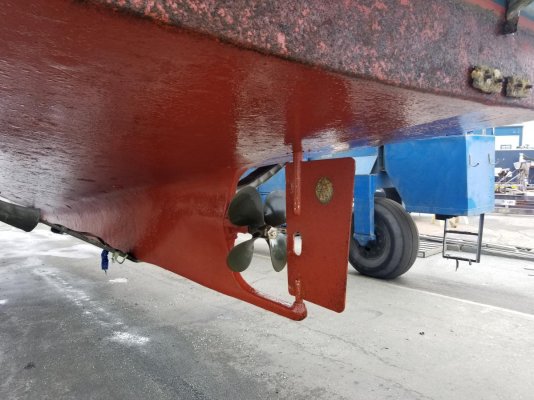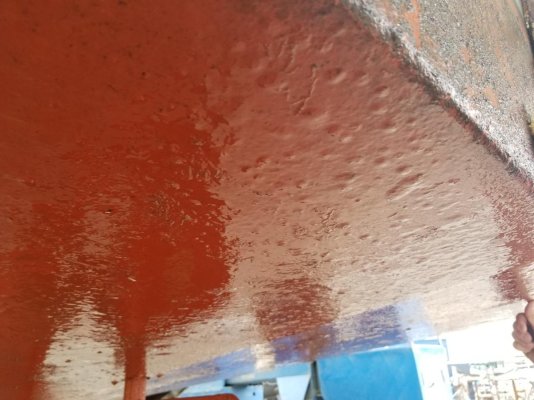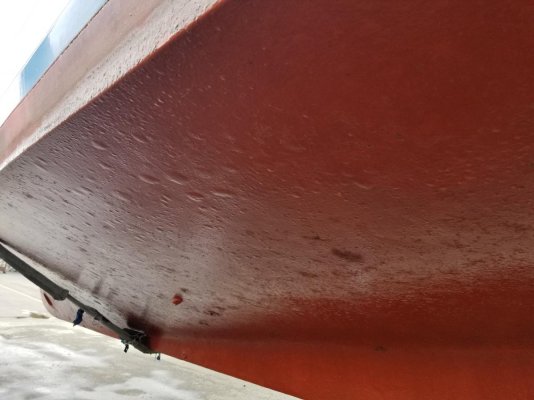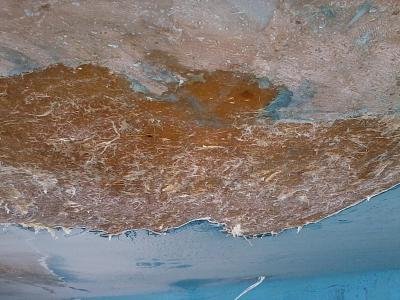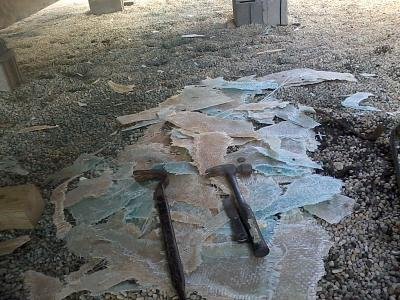Ducatihottie
Senior Member
Yes I've read the blister posts.
Hi all. I had my survey on my 1987 CHB 42' Ponderosa Tri-Cabin US$ 77,000*
We're only discussing blisters here as I'll have my survey results Monday.
As some of you "might" remember, I turned down a perfect interior and exterior CHB 34 that was in incredible condition. BUT the boat had thousands of blisters the size of a dime. The price reflected the hull blisters problem as it was listed for only $39,000, (usually around $59,000 for a perfect 34 CHB in my area Seattle). The owner even admitted that he lowered the price solely for the blisters. After doing homework, (including on this site) I REGRET not buying that boat.
Forward to my Survey on Wednesday of a 1987 CHB 42' Ponderosa Tri-Cabin US$ 77,000*
Blisters on this boat were worse than the CHB I turned down. Not only did it have thousands of blisters the size of a dime and nickel, it had about 100 the size of a Tangerine, (a little larger than a silver dollar). NONE LARGER.
My surveyed boat Wednesday had:
Thousands of blisters about .75 inches, (dime to nickel size). To many to count.
Maybe 100 blisters about 1.5 to 2 inches, (silver dollar size).
Note, I will never pay the estimated $30,000 to $35,000 to repair the blisters and hull. Not worth it. And I understand the argument that I might have difficulty selling it in the future.
QUESTIONS:
The hammering on the hull went well although not as aggressive due to the blisters. If everything else in the survey passes with flying colors:
1. Would you buy the boat?
2. If not, why?
3. If yes, would you ask for a "discount" on the price of the boat, $77,000? How much? Or do you think the price already reflects this, (if everything else looks and functions great).
4. I will have the boat moored in Fresh water Fisherman's Terminal Seattle. If needed, does mooring the boat in saltwater harm or help the blisters? Is salt water bad for a blisterd boat?
5. What are the odds that unknowingly I picked the two CHBs with the most blisters ???
???
Hi all. I had my survey on my 1987 CHB 42' Ponderosa Tri-Cabin US$ 77,000*
We're only discussing blisters here as I'll have my survey results Monday.
As some of you "might" remember, I turned down a perfect interior and exterior CHB 34 that was in incredible condition. BUT the boat had thousands of blisters the size of a dime. The price reflected the hull blisters problem as it was listed for only $39,000, (usually around $59,000 for a perfect 34 CHB in my area Seattle). The owner even admitted that he lowered the price solely for the blisters. After doing homework, (including on this site) I REGRET not buying that boat.
Forward to my Survey on Wednesday of a 1987 CHB 42' Ponderosa Tri-Cabin US$ 77,000*
Blisters on this boat were worse than the CHB I turned down. Not only did it have thousands of blisters the size of a dime and nickel, it had about 100 the size of a Tangerine, (a little larger than a silver dollar). NONE LARGER.
My surveyed boat Wednesday had:
Thousands of blisters about .75 inches, (dime to nickel size). To many to count.
Maybe 100 blisters about 1.5 to 2 inches, (silver dollar size).
Note, I will never pay the estimated $30,000 to $35,000 to repair the blisters and hull. Not worth it. And I understand the argument that I might have difficulty selling it in the future.
QUESTIONS:
The hammering on the hull went well although not as aggressive due to the blisters. If everything else in the survey passes with flying colors:
1. Would you buy the boat?
2. If not, why?
3. If yes, would you ask for a "discount" on the price of the boat, $77,000? How much? Or do you think the price already reflects this, (if everything else looks and functions great).
4. I will have the boat moored in Fresh water Fisherman's Terminal Seattle. If needed, does mooring the boat in saltwater harm or help the blisters? Is salt water bad for a blisterd boat?
5. What are the odds that unknowingly I picked the two CHBs with the most blisters
Attachments
Last edited:

